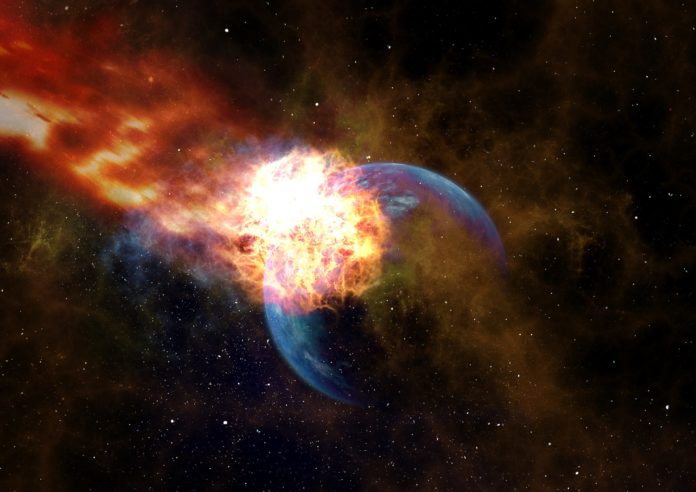Nearly 10 years ago, a team of scientists uncovered evidence for what they believed to be the oldest intact impact crater on Earth. The 100-kilometre-long structure is located in a region of Greenland called Maniitsoq, and the original study suggested that it may have formed three billion years ago.
Now, with the help of new evidence, a scientist from the University of Waterloo is challenging that theory. His research suggests that the Maniitsoq structure is not a crater at all, but is instead a byproduct of normal geological processes.
The study was led by Chris Yakymchuk, a professor in the University of Waterloo’s Department of Earth and Environmental Studies, and published in Earth and Planetary Science Letters.
Yakymchuk hadn’t planned on disputing the structure’s origin, but after surveying the area, he began to question whether Maniitsoq really was the result of an ancient impact.
“We went there to explore the area for potential mineral exploration,” he explained in a press release, “and it was through close examination of the area and data collected since 2012 that we concluded the features are inconsistent with a meteorite impact.”
The key piece of evidence came in the form of zircon crystals: extremely durable, ancient minerals that act as a window to the Earth’s past.
Due to its durability, zircon is able to survive through potentially-destructive geologic events. It also records evidence of these events in the form of new material that builds up around the original crystal. Scientists can then study this new material to determine what the zircon survived through — similar to how tree rings can be analyzed to uncover past events.
“Zircon crystals in the rock are like little time capsules,” Yakymchuk explained. “They preserve ancient damage caused by shockwaves you get from a meteorite impact.”
After analyzing more than 5,000 zircon grains present in the Maniitsoq structure, however, Yakymchuk and his colleagues found no evidence of ancient shockwaves. This suggests that the region did not form through a meteorite impact.
The initial study also pointed to a magnetic anomaly as further evidence for a meteorite impact, because magnetism can be associated with meteorites. Yet when the levels of magnetic activity were considered across the 100-kilometre scale of the crater, Yakymchuk and his colleagues found that they weren’t significant.
“[T]he various magnetic patterns in the rocks can be explained by normal, Earth-bound geological processes,” wrote Julie Hollis, the Head of Department of Geology for the Government of Greenland and co-author of the study, in an article for Massive Science.
With this new evidence brought to light, the world’s oldest impact crater now appears to be the 2.2 billion-year-old Yarrabubba Crater in Australia — and while it may sound ancient, it’s only half the age of the Earth.
Craters can serve as important records of a planet’s past. Here on Earth, however, erosion processes have wiped away the oldest impacts.
Thankfully, the moon doesn’t experience these same erosion processes, and its well-preserved craters can offer scientists a glimpse into our own Earth’s distant past.




































